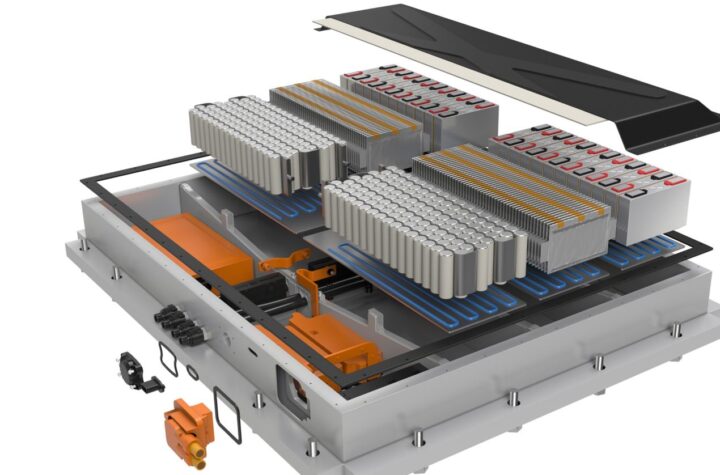
UGS Corp., a leading global provider of product lifecycle management (PLM) software and services, today announced that Ford Motor Company has deployed UGS’ in-vehicle software data management solution on 57 worldwide vehicle programs, including the customer favorites Ford Explorer, Mustang and Escape Hybrid.
UGS, working closely with Ford, developed the in-vehicle software data management solution to help Ford track embedded software content, associated with an electrical control unit (ECU). Based on Teamcenter(R) software, UGS’ digital lifecycle management solution, the world’s most widely used PLM portfolio, the solution allows content to be tracked throughout the lifecycle of a vehicle and coordinates its use and function as a part of the overall system.
In-vehicle software management enables Ford to leverage its global innovation network, enhance enterprise-wide collaboration and standardize product data management associated with the growing volume of embedded software it is building into its fleet of increasingly intelligent vehicles. As vehicle designs continue growing in complexity and sophistication, this solution provides a critical process improvement.
“Ford, a leader in the automotive industry, is committed to using innovation to improve the driving experience of its customers and this innovative PLM technology will help Ford realize significant cost savings and enable the company to continue to more efficiently produce the types of intelligent vehicles that consumers are increasingly looking for,” said Chuck Grindstaff, executive vice president, Products, UGS. “With its initial success at Ford, this solution has the potential to address a much broader and rapidly growing market, as the use of embedded software becomes more commonplace in products from washing machines and cell phones to automobiles and aircraft. The embedded software management capability is an example of how Teamcenter maintains its leadership position in value creation for world class manufacturing companies.”
Problem defined, problem solved
As Ford continues to increase the amount of intelligence in its vehicles — from anti-lock braking systems to on-board global positioning systems and more — it also increases the number of tiny computers, known as electrical control units (ECUs), on board each vehicle. A typical ECU includes the appropriate electronic circuitry for its designed function along with the embedded software necessary to provide controls and added features. Today, there can be as many as ten times the 4 or 5 ECUs that used to control a single vehicle and each one must be tracked as a single component or “part” in the vehicle’s bill-of-materials (BOM).
Over the past several years, however, the software controlling a particular ECU has become increasingly sophisticated. It is often outsourced to suppliers, subject to frequent updates and can be the source of a competitive advantage for a particular vehicle. As a result, it has become increasingly important to identify and manage the embedded software as a separate component and coordinate its use and application within the context of a much larger system.
Broad potential market for “mechatronics”
The need to separately track and manage embedded software associated with electro-mechanical systems is not unique to Ford or even the automotive industry. A wide variety of other industries including aerospace, electronics, medical instruments, communications, office equipment and consumer products, also use electro-mechanical systems to control the various functions of their products and enable high value capabilities. The common technology shared by all of these industries is known as “mechatronics.”
A mechatronics system involves the synergistic integration of mechanical, electronics and embedded software technologies into an electro-mechanical product. Mechatronics systems can be found in products ranging from sophisticated communications satellites to automatic coffee makers and the manufacturers of many of these products could benefit from a better way to manage the digital form of these systems.
“UGS has worked closely with Ford and several other customers around the world providing us with a comprehensive understanding of the unique characteristics and requirements of developing and managing integrated electronics, software and mechanical systems,” said Grindstaff. “Our vision is to integrate software solutions for every phase of a product’s lifecycle into an overall mechatronics product and process model. The Teamcenter implementation at Ford is a good example of progress toward that vision. We foresee huge potential customer benefits such as high-fidelity, product-level simulation; better, more productive tools to drive innovation; and improved efficiency for a wide variety of industries enabled by these solutions.”
UGS Teamcenter powers innovation and productivity by connecting people and processes with knowledge. Teamcenter’s comprehensive portfolio of proven digital lifecycle management solutions is built on an open PLM foundation. Teamcenter, winner of the IndustryWeek Technology of the Year Award for 2005, is the de facto standard for PLM deployments, and is backed by UGS’ leadership in delivery.
UGS is a leading global provider of product lifecycle management (PLM) software and services with nearly 4 million licensed seats and 46,000 customers worldwide. Headquartered in Plano, Texas, UGS’ vision is to enable a world where organizations and their partners collaborate through global innovation networks to deliver world-class products and services while leveraging UGS’ open enterprise solutions, fulfilling the mission of enabling them to transform their process of innovation. For more information on UGS products and services, visit http://www.ugs.com/ .












More Stories
Your Guide to Filing a Car Accident Claim
Steps to Take Immediately After a Car Accident
What Makes SUV Cars More Prone to Accidents?